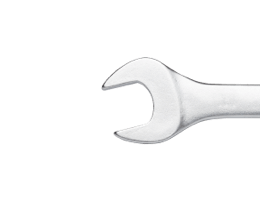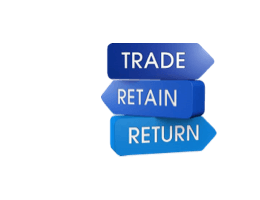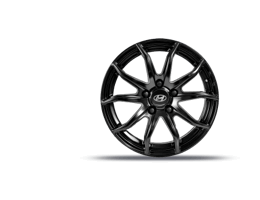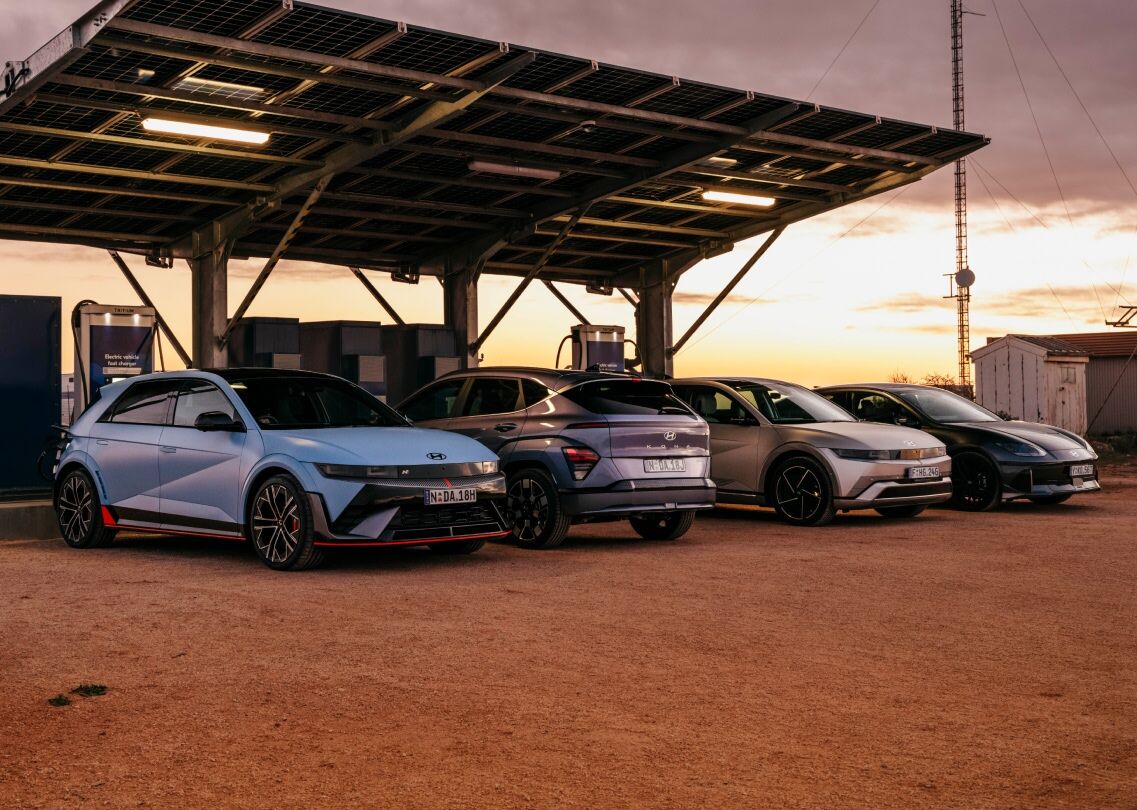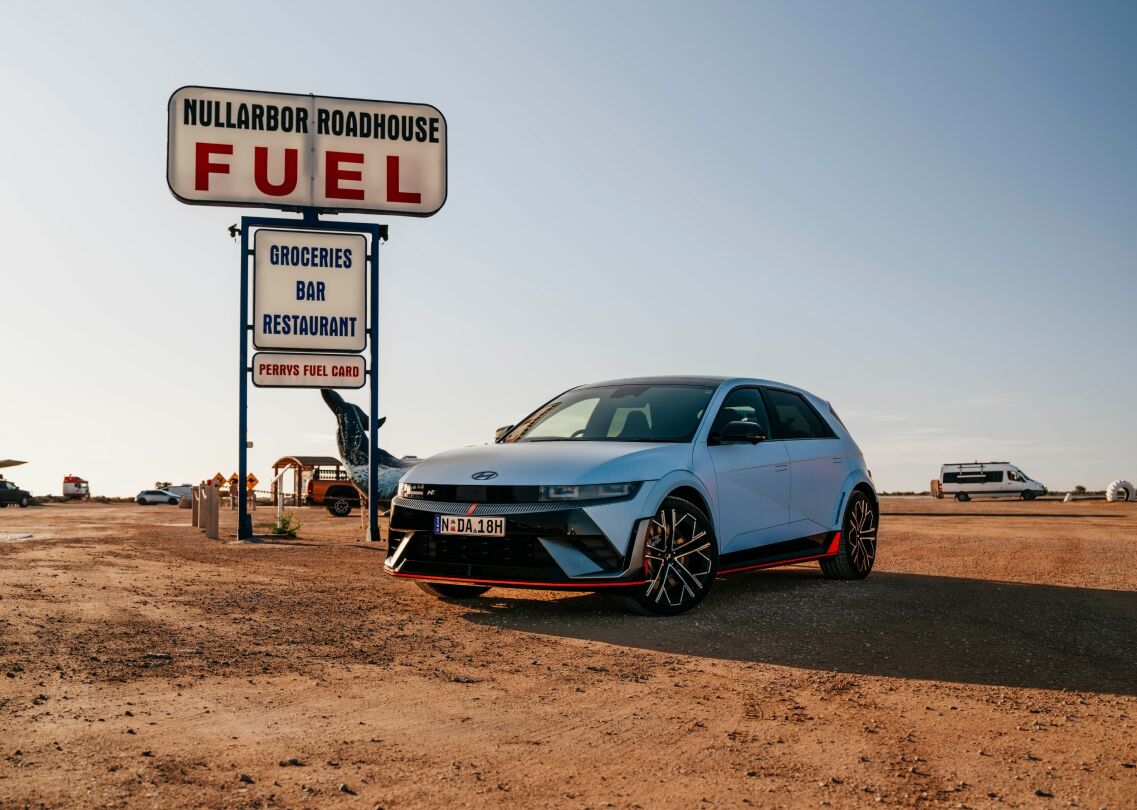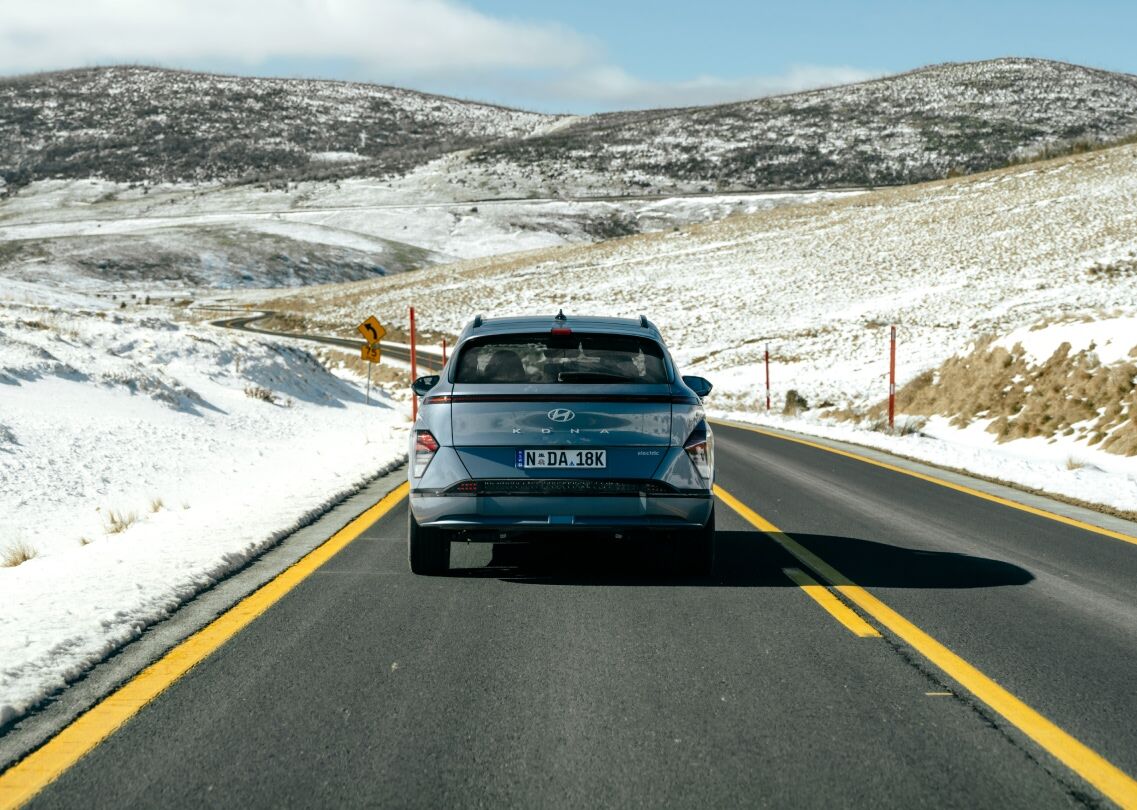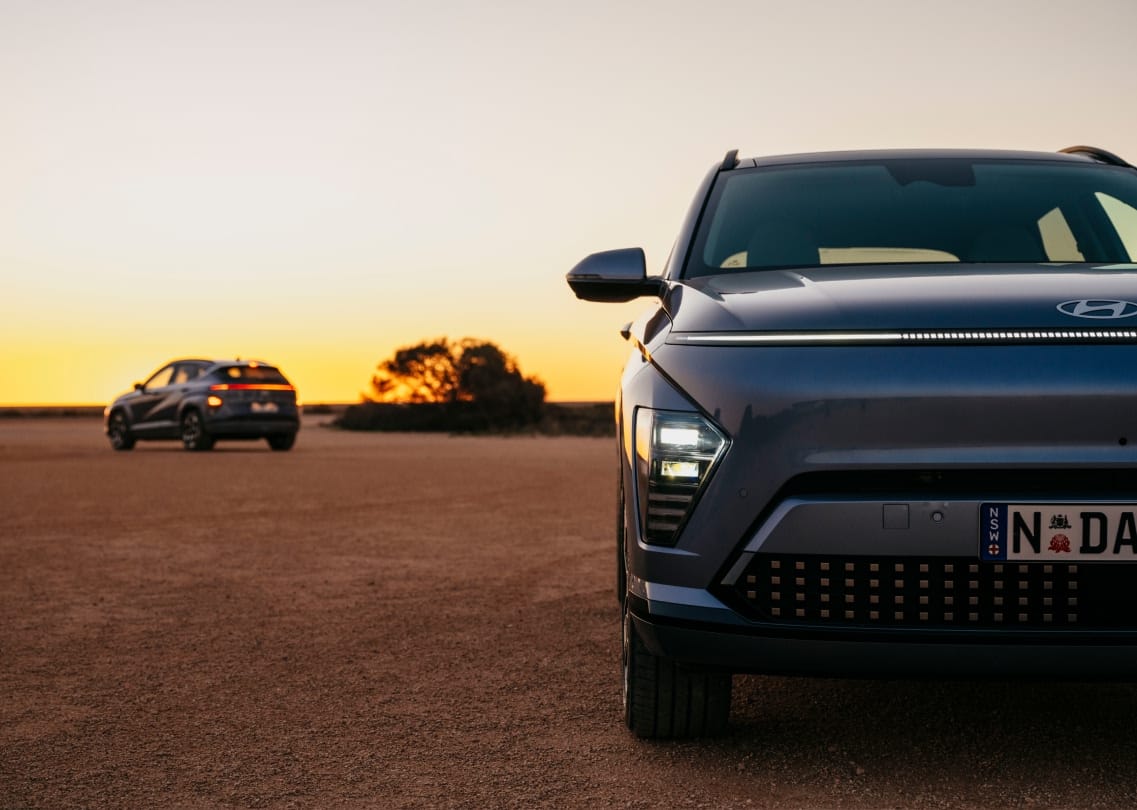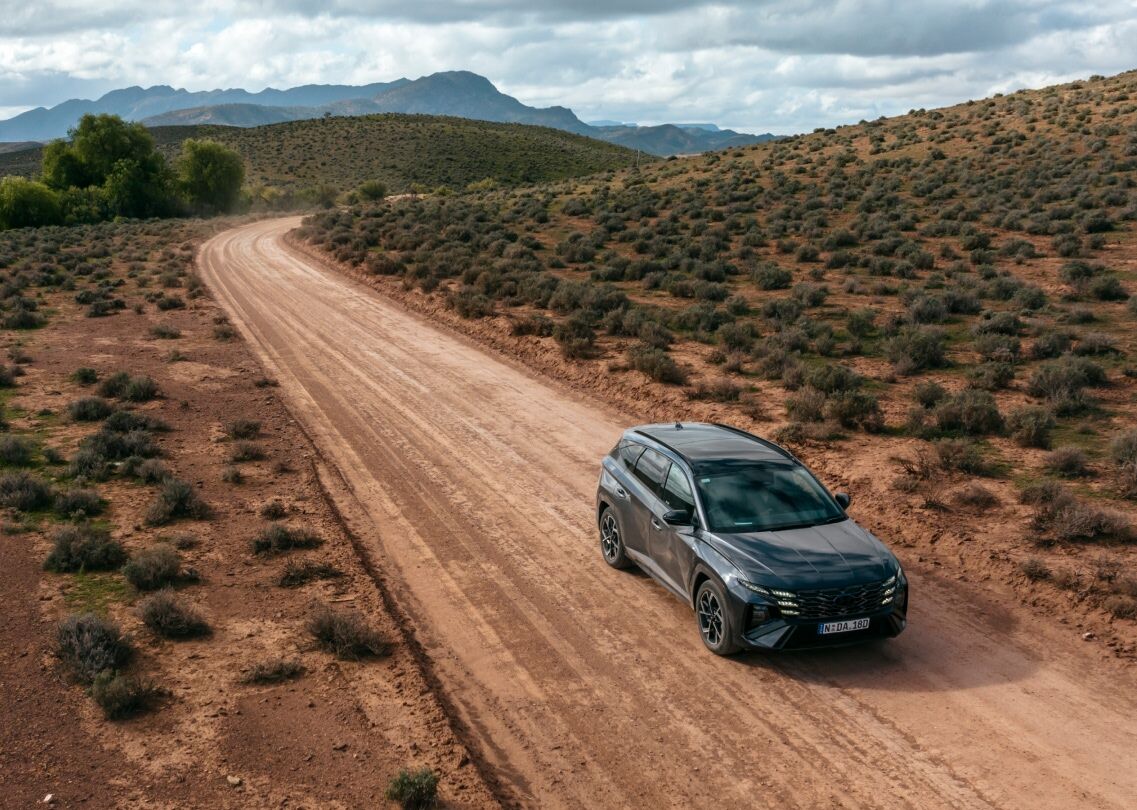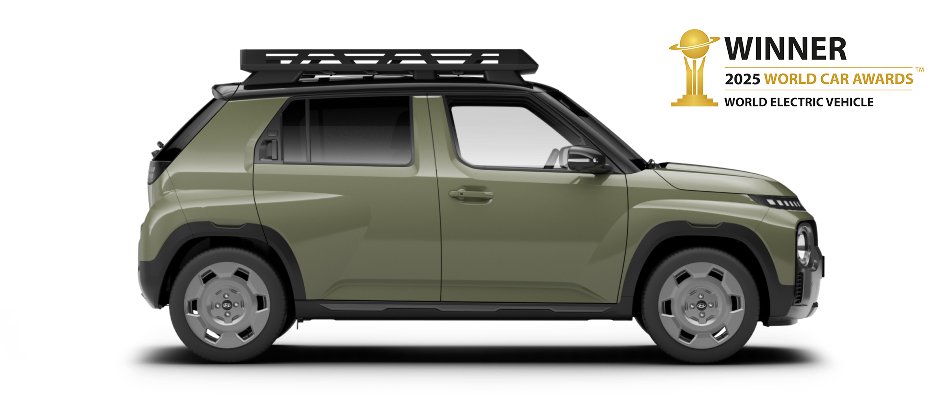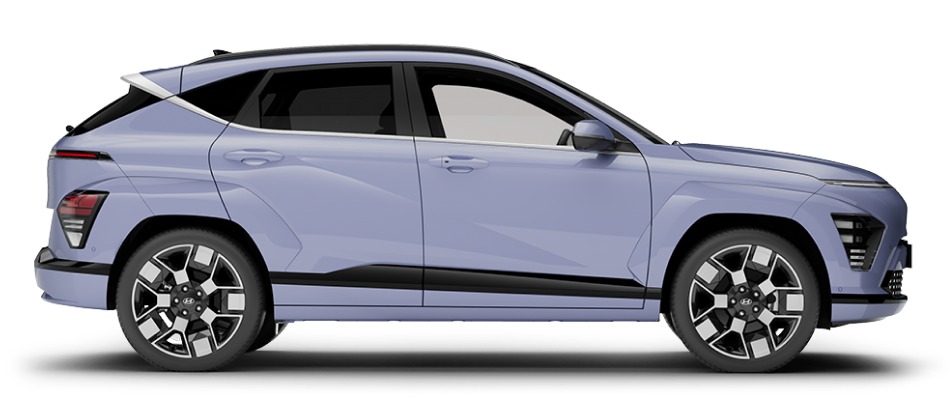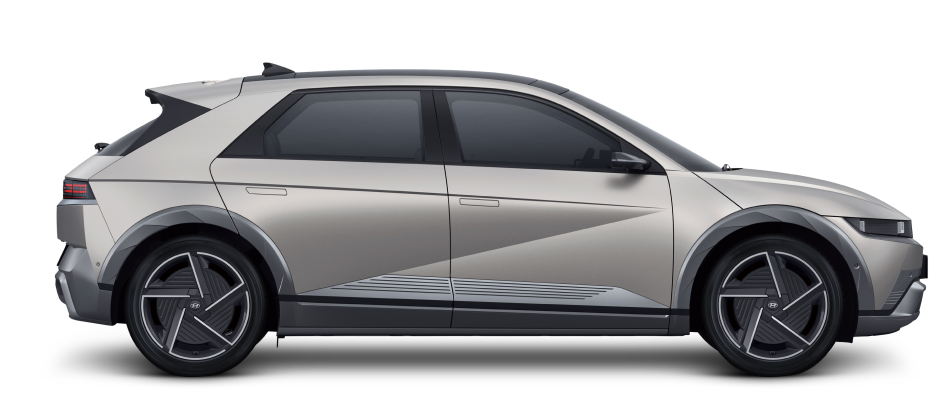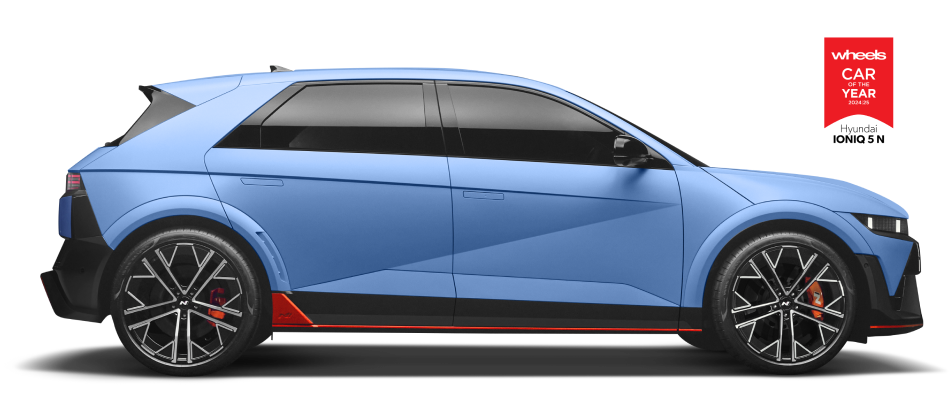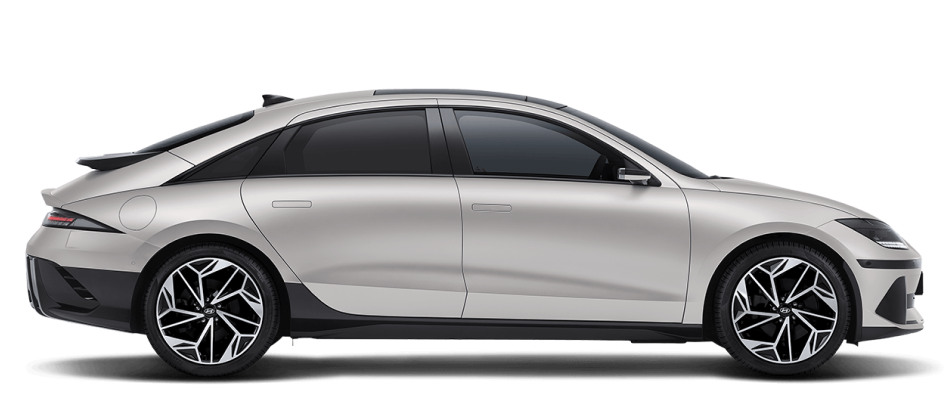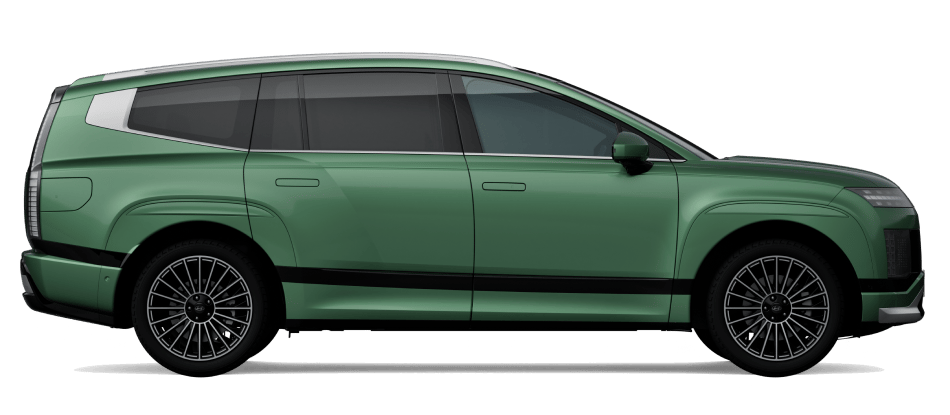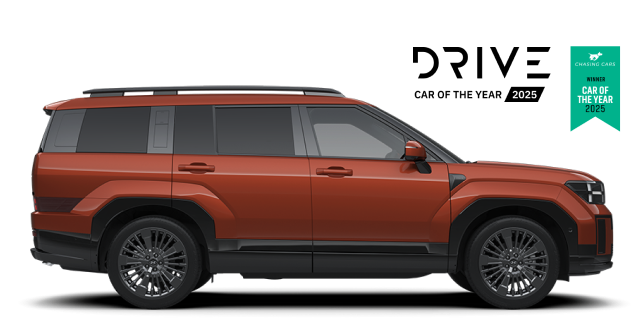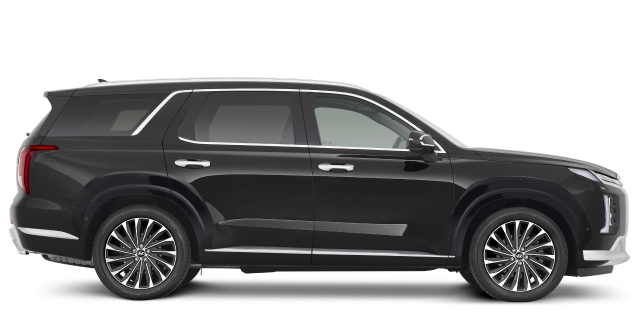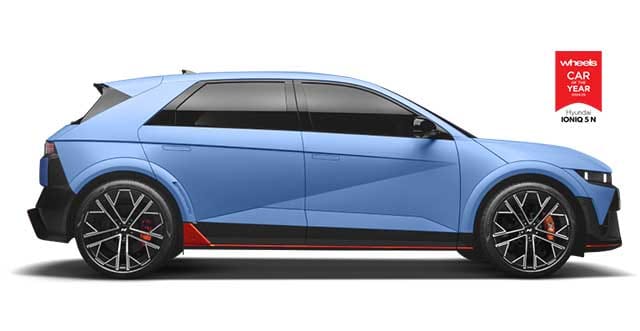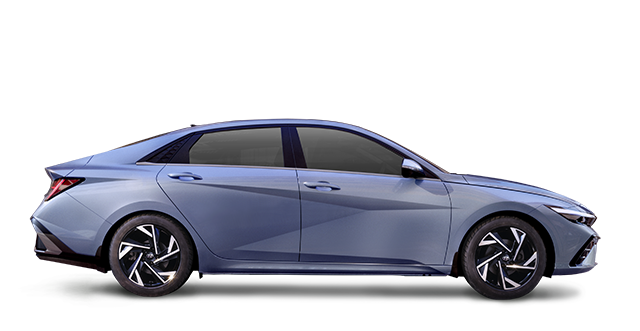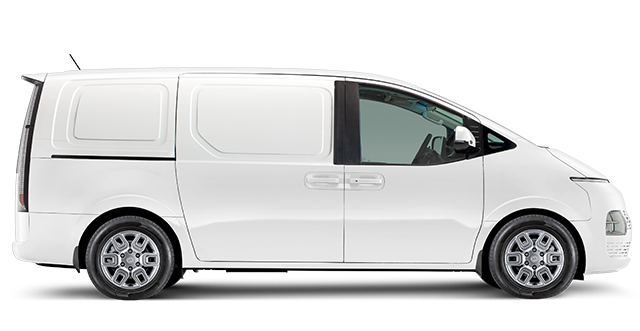Ever driven tomorrow's car today?
Now you can.
A seamless switch.
Lower cost of ownership
Compare the range.
More than zero-emissions driving.
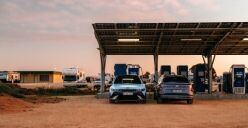
Sustainable EV charging.
Through partnerships and other initiatives with renewable energy partners like Ampol and EVSE, as well as international ventures like IONITY, we’re promoting alternative methods to generate power for EV charging, including solar and wind.

EV battery recycling.
We’ve signed recycling agreements with various partners including Lithium Australia to ensure the safe disposal and recycling of used batteries from our EVs.
FAQs.
-
Within our range, you’ll find:
Electric SUVs, like the KONA Electric, IONIQ 5, and IONIQ 5 N, perfect for your daily commute and weekend adventures.
Electric Sedans, like the IONIQ 6, made for urban exploration.
Small EVs, like the INSTER, that are fun to drive and full of personality.
Luxury EVs within the IONIQ range that have premium features and advanced tech ripped straight from the future.
-
EV batteries are built to last, typically offering 8–10 years or around 160,000–200,000 km of reliable performance before showing noticeable capacity loss. With proper care and the latest advancements in technology, their lifespan is continuously improving. Hyundai’s EVs are designed to ensure your battery delivers long-lasting efficiency, giving you confidence for every journey.
-
There are three types of EV chargers to consider:
Level 1 Chargers: This involves charging your EV from a standard 240-volt household (wall) outlet. This is the simplest and slowest form of home EV charging. They're affordable and convenient but are usually used overnight.
Level 2 Chargers: This includes home wall boxes installed in household or apartment garages or public charging stations at shopping centres, workplaces and public parking areas. Single-phase level 2 chargers add 30-35km of range per hour, while three-phase level 2 chargers add 30-130km of range per hour, depending on the vehicle.
Level 3 Chargers: These home or public chargers provide rapid charging by converting AC power to DC within the charging station, bypassing the vehicle's onboard charger. They can deliver up to 150-300km of range per hour.
-
Are EV charging stations free? Throughout Australia, many public charging stations are free to use. However, most fast-charging stations generally cost from $23 - $54 for a full charge depending on vehicle size and provider, which is around 20% cheaper than buying petrol.
-
EV charging time varies by charger type. With a fast charger, models like the IONIQ 5, IONIQ 6, and IONIQ 5 N can go from 10% to 80% in 18 minutes[P2] while the KONA Electric can go 10% to 80% in just 45 minutes[P2].
-
Regenerative braking is an innovative system in vehicles with an electric motor that converts the kinetic energy generated from braking into electrical energy that recharges the vehicle's battery. In other words, it charges your car while you drive, meaning less time and money spent charging.
The latest in electric vehicle news.
7 Year Unlimited Km Warranty
Hyundai’s new 7-Year Unlimited Kilometre Warranty is available for Hyundai passenger vehicles first registered from 1 June 2025 and when all scheduled services are completed at an authorised Hyundai dealer. [H1] All to give you more coverage and more peace of mind, so you can go further on every drive.
Learn more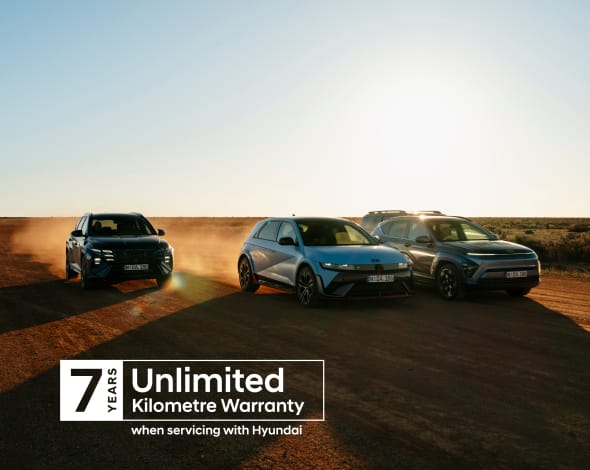
Buying tools.
Explore more.
Disclaimers.
[P1] Figure based on WLTP (Worldwide Harmonised Light-Duty Vehicles Test Procedure) static laboratory combined average city and highway cycle test, which measure, energy consumption, range, and emissions in passenger vehicles, designed to provide figures closer to real-world driving behaviour. Real life driving results will vary depending on a combination of driving style, type of journey, vehicle configuration, battery age and condition, use of vehicle features (such as heating and air conditioning), as well as operating, environmental and climate conditions.
[P2] Charging time applied to when connected to an 800V ultra-rapid charger. Charging times may increase if peak charging rates are not achieved. Charging times will also be dependent on the condition and durability of the high voltage battery, charger specifications, and ambient temperature at point of use.
Charging times may increase if peak charging rates are not achieved. Charging times will also be dependent on the condition and durability of the high voltage battery, charger specifications, and ambient temperature at point of use.
[P3] Requires Bluelink™ to be activated, compatible device & app installation, third party info, mobile data, network reception and GPS signal to operate. Mobile usage at user’s cost. Not available in areas not covered by the Optus 4G network in Australia or if services are disabled or terminated. Features and app are subject to change.
[P4] Premium Roadside Support Plan
12 months included Premium Roadside Support when you buy a new Hyundai internal combustion engine or hybrid vehicle from a participating authorised Hyundai Dealer. For purchases from a participating authorised Hyundai Dealer of new Hyundai battery electric vehicle Hyundai offers 24 months included Premium Roadside Support. Premium Roadside Support commences from the date of the vehicle’s warranty commencement.
When you have your Hyundai internal combustion engine or hybrid vehicle’s scheduled service completed at a participating authorised Hyundai Dealer, you will receive 12 months of included Premium Roadside Support from the date of service. For Hyundai battery electric vehicles, that have their scheduled service completed at a participating authorised Hyundai Dealer, you will receive 24 months of included Premium Roadside Support from the date of service. Available for all Hyundai vehicles (excluding rental buyers and taxis). Terms, conditions and exclusions apply, visit hyundai.com/au/en/owning/myhyundaicare/roadside-support.
[P5] Sat Nav Update Plan
Applies to new Hyundai vehicles with both 8” and 10.25” factory-fitted satellite navigation. Updates are delivered annually and are included if the vehicle completes a scheduled service at an authorised Hyundai Dealer. Updates must be undertaken within 10 years of the vehicle’s first registration date, with a maximum number of 9 updates. Visit hyundai.com/au/en/owning/myhyundaicare/sat-nav-plan for full terms and conditions.
[H1] 7 Year Unlimited Km Warranty
In addition to the 5 Year Standard New Car Warranty, Hyundai provides an extended warranty for up to a further 2 years, when all servicing is with Hyundai, on passenger vehicles first registered from June 1, 2025. Maximum warranty is 7 years from date of first registration, on the condition that all scheduled services are completed within the specified service intervals at an authorised Hyundai dealer. Otherwise, the standard 5 year unlimited km warranty (from the date of first registration) applies. Service conditions apply. Excludes Hybrid & EV drive batteries, which are warranted for 8 years / 160,000km (whichever occurs first) from the date of first registration. Does not apply if the vehicle is used at any time during the warranty period used for a “commercial application” as defined in the warranty policy, which includes use as a taxi, hire, ride-share, rental, courier, delivery, security, driving school, tour, bus operator or emergency vehicle, or any other use in the course of trade for the purpose of carrying passengers or goods. Passenger vehicles used for a commercial application are provided with a 5 year/130,000km warranty (whichever occurs first). People Mover Vans used for a commercial application are provided with a 5 year/160,000km warranty (whichever occurs first). Commercial Vans are provided with a 5 year/160,000km warranty (whichever occurs first) regardless of its usage. Terms, conditions and exclusions apply, view the Warranty page.
